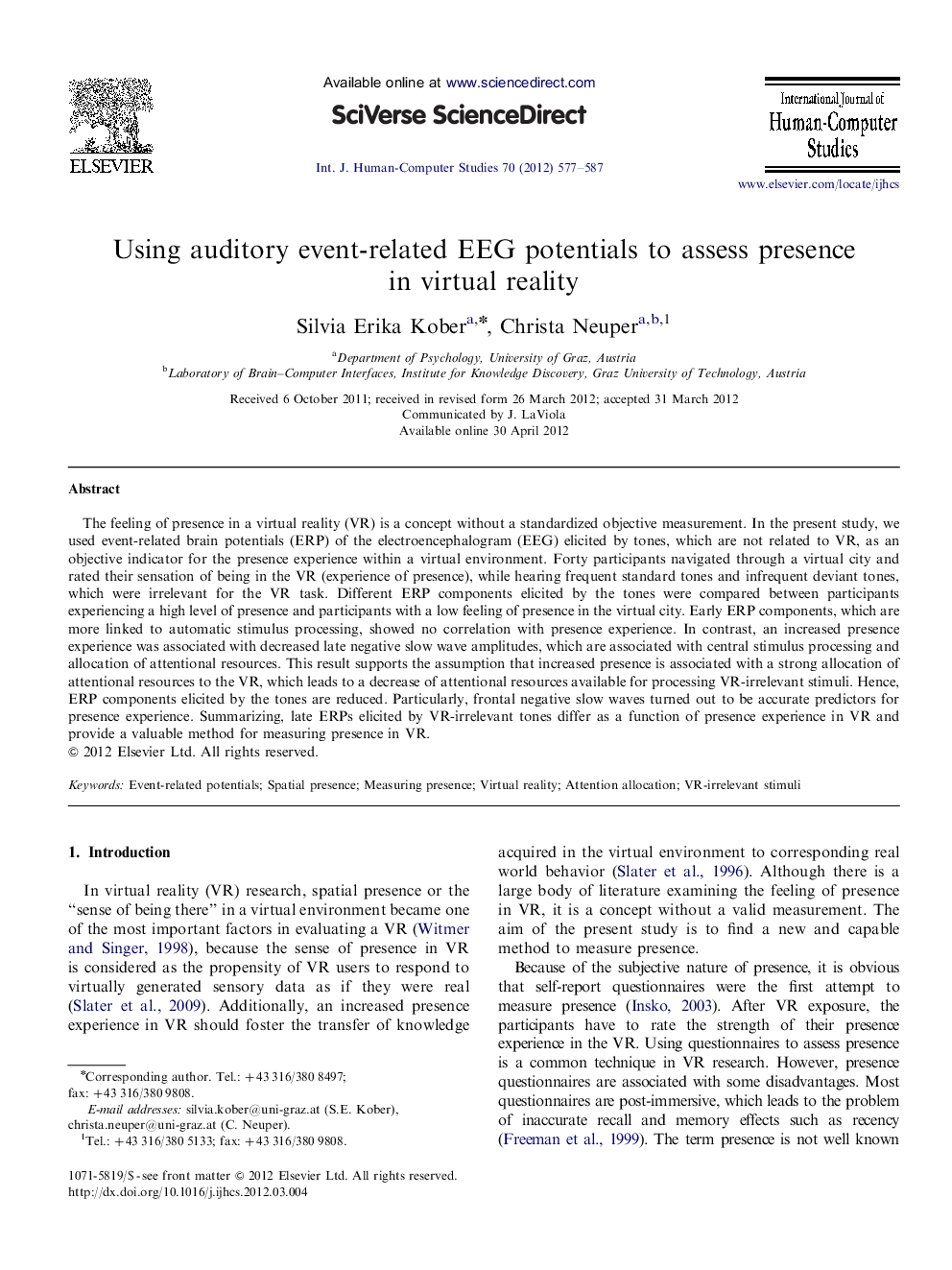| Article ID | Journal | Published Year | Pages | File Type |
|---|---|---|---|---|
| 401937 | International Journal of Human-Computer Studies | 2012 | 11 Pages |
The feeling of presence in a virtual reality (VR) is a concept without a standardized objective measurement. In the present study, we used event-related brain potentials (ERP) of the electroencephalogram (EEG) elicited by tones, which are not related to VR, as an objective indicator for the presence experience within a virtual environment. Forty participants navigated through a virtual city and rated their sensation of being in the VR (experience of presence), while hearing frequent standard tones and infrequent deviant tones, which were irrelevant for the VR task. Different ERP components elicited by the tones were compared between participants experiencing a high level of presence and participants with a low feeling of presence in the virtual city. Early ERP components, which are more linked to automatic stimulus processing, showed no correlation with presence experience. In contrast, an increased presence experience was associated with decreased late negative slow wave amplitudes, which are associated with central stimulus processing and allocation of attentional resources. This result supports the assumption that increased presence is associated with a strong allocation of attentional resources to the VR, which leads to a decrease of attentional resources available for processing VR-irrelevant stimuli. Hence, ERP components elicited by the tones are reduced. Particularly, frontal negative slow waves turned out to be accurate predictors for presence experience. Summarizing, late ERPs elicited by VR-irrelevant tones differ as a function of presence experience in VR and provide a valuable method for measuring presence in VR.
► Auditory ERPs elicited by VR-irrelevant tones are objective indicators for presence experience. ► Auditory ERPs elicited by VR-irrelevant tones can be used to measure and predict presence in VR. ► Increased presence is associated with a strong allocation of attentional resources to the VR. ► Late negative slow waves are the best indicators for presence experience in VR.
